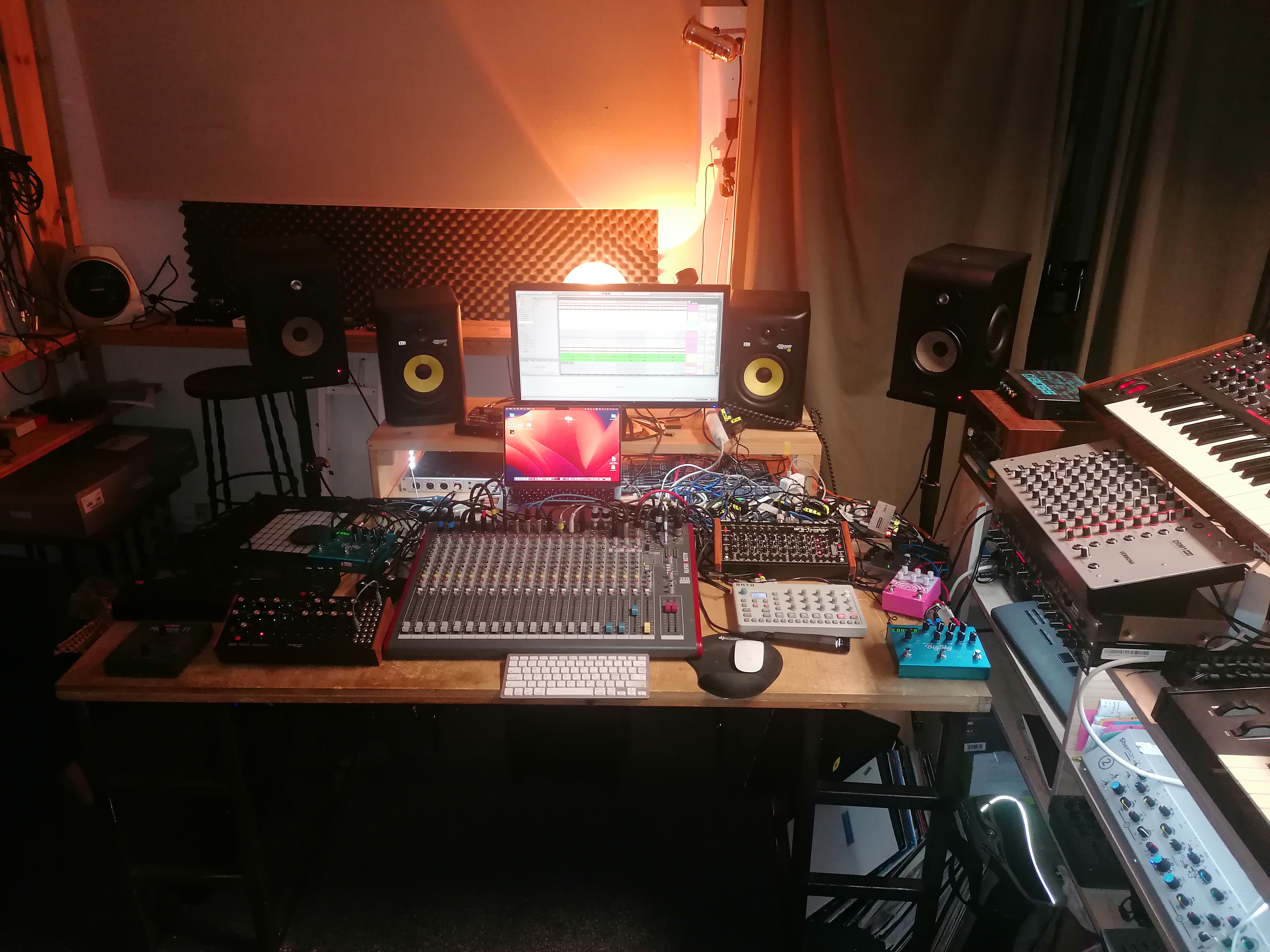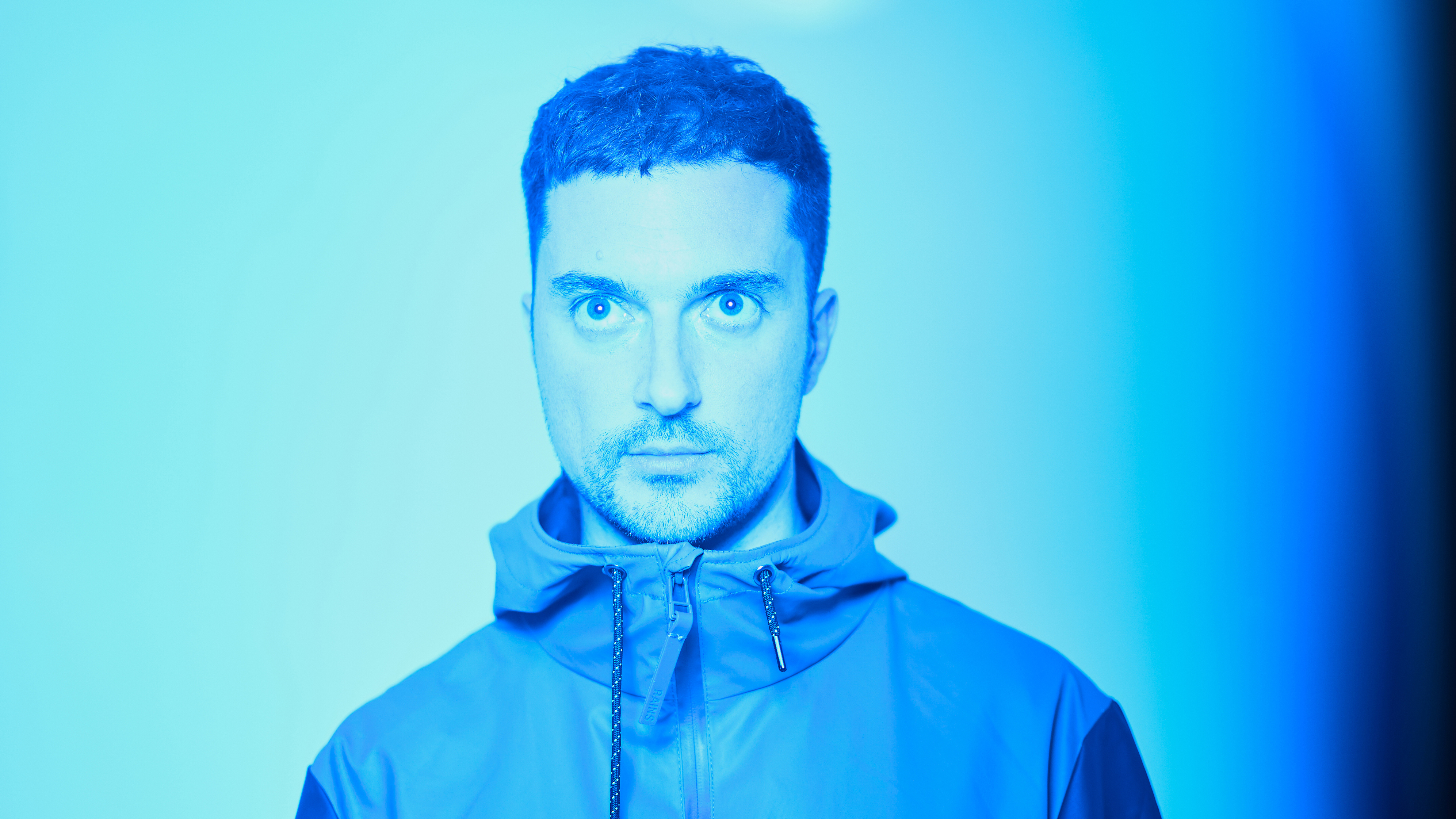Rhyw on sampling car engines, drum processing and why he loves the Sherman Filterbank: "I go through phases when I can’t make anything sound good, then I’ll come across a combination of parameters and it’s just gold"
The Welsh-Greek producer reveals the gear and production techniques behind his wildly imaginative club constructions

Alex Tsiridis has been cooking up future-facing dance music for well over a decade, both under the moniker Rhyw and as one half of production duo Cassegrain, but he was firmly planted on our collective radar by last year’s superb Honey Badger EP, a quartet of mutated club constructions fronted by a dizzying title track that was equal parts brain-frying belter and percussive experiment.
Mister Melt, the Welsh-Greek producer and DJ’s latest EP, affirms his place as one of dance music’s most imaginative artists. Engine Track is a 200mph speedrun through feverish, squelchy techno, fittingly laced with vroom-vroom F1 samples; Wolf Town feels like a successor to Honey Badger with its rapid-fire percussion; while Spritz and Mister Melt find Rhyw breaking out some of the freakiest effects processing we’ve heard all year.
It’s an electrifying listen, and the pulse is so relentless that you barely get a chance to stop and admire the producer’s expert, detail-oriented ear for timbre, texture and sound design. We caught up with Rhyw to find out more about his truly unique approach to music-making.
When did you start making music, and how did you first get started?
“I got into electronic music from a very young age, listening to rave tapes and buying CD singles from age nine, but actually making stuff was kind of an accident. I was 14 and was trying out demos of games for PS1 and one of them was [music-making game] Music. I got pretty hooked and bought the next one, Music 2000.
“It was basically building blocks, making tracks out of samples, from entire hooks to single notes, perc hits, etc. So this basically blocked an entire world of gaming for me. I got into Fruity Loops after that, followed by Reason, Ableton and eventually buying hardware years later.”
Tell us about your studio/set-up?
Want all the hottest music and gear news, reviews, deals, features and more, direct to your inbox? Sign up here.
“I rent a space in Alt-Treptow in East Berlin. I’ve been there for eight years or so by now and feel very fortunate to be there. It’s quite a big room on the fourth floor of what I’m pretty sure was an old school. I have a decent amount of hardware at this point but not loads and I never got involved with modular stuff. I’m by no means a gearhead so I don’t buy new stuff that often and tend to minimise my setup and switch something up for each production cycle.
I spend a lot of time editing, doing versions of versions and recording multiple takes so I like the source of the sound to be reasonably straightforward
“I spend a lot of time editing, doing versions of versions and recording multiple takes so I like the source of the sound to be reasonably straightforward. Like, I know I’m gonna get burnt out each time so I’d rather that didn’t happen in the first stage, if that makes sense. The past few years I’ve been using a lot more plugins than I used to, I think due to the nature of my music changing, more edits, more dynamic structures - but the sources are almost always analogue.”
What DAW (or DAWs) do you use, and why did you choose it?
“I use Ableton Live. I used to use Reason and Fruity Loops as I mentioned, so Live felt like a natural progression. I’m not 100% sure but I think the initial reason was to be able to play out, DJing with clips, layering tracks, before I learnt how to actually mix with CDJs/turntables and long before any serious DJ gigs. I love Live, it’s streamlined to allow you to just get on with it and focus on ideas.”

What one piece of gear in your studio could you not do without, and why?
“Tough one, it’s between the Vermona DRM1 MKII and Sherman Filterbank. I have had both for years and still use them all the time, constantly. The Vermona is just a great straightforward drum machine with so many parameters to tweak. I use it a lot for unorthodox hooks, things like that. I use the hats for actual hats a lot, but otherwise I mostly find other things to do with it.
I go through phases when I can’t really make anything sound good, then sometimes I’ll come across a combination of parameters and it’s just gold
“The Filterbank can be a bit hit or miss, I go through phases when I can’t really make anything sound good, then sometimes I’ll come across a combination of parameters and it’s just gold - it’s been the source of a lot of magic over the years. So I use that for a lot of processing on bass, drums, riffs, melodic elements. I have no idea how it works.”
What's the latest addition to your studio?
“The Elektron Model:Cycles. I hadn’t actually heard of it until early this year. I started working on a live set, which took up more or less the first half of 2023 before premiering it in June. I was looking for something to have fun with on stage and this really worked for me. I’ve since started using it in the studio regularly. I think it’s so underrated especially for the price! Obviously it doesn’t have the capabilities of Elektron’s higher-end gear but I’ve never been keen on the menu-diving aspect, especially if I’m going to be on stage.”
What dream bit of gear would you love to have in your studio?
“Maybe an EMS Synthi.”

When approaching a new track or project, where do you start?
“I usually have ideas in voice notes to check on. Sometimes it’s a big one with many recorded notes, instructions to myself, bad beatboxing, etcetera, so I’ll have a clear goal as I’m going into the studio to work on it. Sometimes things might turn out quite different to the original idea, but just having that focus or inspiration is key.
“What’s important for me is that these things come about naturally, usually when walking around or cycling. I’ve found that often leads to something special, rather than being in the studio and trying to force something out. If I’m completely stuck or have exhausted my voice notes then I go back to my list of unfinished-but-not-abandoned-or-terrible projects and see if something gives me a spark. Sometimes ideas need a lot of time to sit before being developed.”
The drums in your tunes are super hard-hitting and impactful. Do you have any go-to techniques or tools for processing drums?
“I layer up quite a lot of sounds, sometimes a snare for example might be too thin-sounding or just not special enough, so that can solve it. I might then group stuff and process the group. It’s extremely rare that any sound in my music is not layered or processed in some way.
I use FabFilters a lot - Soundtoys Decapitator and Devil-Loc or FabFilter Saturn can be good to give a little boost or punchiness
“One exception I can think of is a tom from the Roland R-8 that I’ve used a few times untouched - something for balance in terms of sound design and weirdness - but mainly I find it quite funny and it can save a track from being too dry or serious. In terms of actual processing, EQing is the main thing. I use FabFilters a lot and Soundtoys Decapitator and Devil-Loc or FabFilter Saturn can be good to give a little boost or punchiness. I’ve used Valhalla Supermassive on a lot of percussion, which has been quite spicy.”
Is that engine-like sound in the second half of Engine Track actually a sample of an engine, or a synth patch that sounds like one?
“Both! The main engine breakdown is a sample - a recording of an engine revving, following a little sample collage of car-bits. I layered that with a synth and some re-processing of the engine sample through the Strymon Big Sky. The actual ravey riff that fades in during the breakdown and drops is a synth line from the Sequential Pro 2.”
We love that mangled lead synth line in Mister Melt. Could you shed any light on how you came up with that sound?
“I wrote that on MIDI and played it through the Pro 2. I’d had that line sitting around for a couple years at least, then when preparing my live set I came across it again and decided to include it. It was originally a bit too clean and trance-leaning for my taste so I layered it using the Zynaptiq Morph plugin with some sounds I had stretched out in Audacity. This is what gives it this spectral processing feel and what made it exciting for me.”
Rhyw’s Mister Melt is out now on Fever AM.
Rhyw's production tips
1. Start with a concrete idea
“This is what will make the music more ‘you’ and help it stand out. Write notes, record notes, make folders of things that inspire you. Think of the types of sounds you’re using, and the track’s arrangement. This can be more easily applied to more out-there leftfield stuff but I mean it for everything.
“It could be a hook, a vocal element, a breakdown, even something so simple as a particular snare – anything that gives the track some personality. The ‘idea’ could be a melody or a particular rhythm or some kind of gimmick in the song’s structure. If you’re stuck, give the track some breathing room, come back to it later - maybe months down the line - and listen to it in different situations and on different speakers.”
2. Create your own sounds
“I’m not fully organised in the sense of building my own sound bank, but I probably have a few sound banks worth of sounds scattered across folders and hard drives. One way I’ll usually do this is by throwing sounds into Audacity and stretching them out again and again, reversing, pitching down, speeding up, etcetera, then making folders with the exports.
“These can come in very useful when adding textures, or creating build-ups, small details and edits, but also chopping them up can be great to get unique sounding hi-hats and percussion. Try this on everything: single perc hits, melodies, vocals..
“Otherwise, processing samples or recordings also works, of course - there’s so many interesting plugins from Soundtoys, Valhalla, Zynaptiq, FabFilter. Try using sounds that aren’t intended for what you want, whether it be a snare to write a melody or recording clips from movies - a car door slamming shut is a good one.”



I'm MusicRadar's Tech Editor, working across everything from product news and gear-focused features to artist interviews and tech tutorials. I love electronic music and I'm perpetually fascinated by the tools we use to make it.